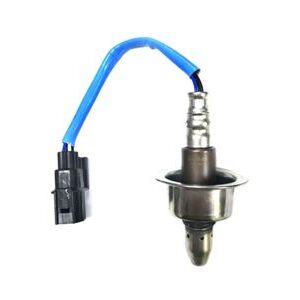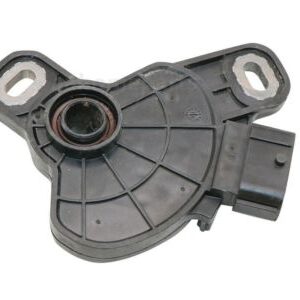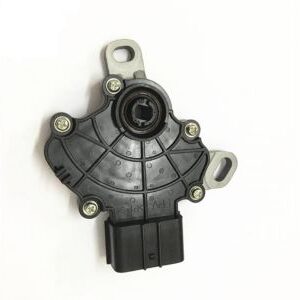**Crucial Cogs in the Engine: The Coolant Temperature Sensor**
In the intricate dance of components within a modern automobile engine, there exists a small but mighty device that often goes unnoticed—the coolant temperature sensor. While its name might not immediately evoke intrigue or fascination, its role in engine performance and longevity is nothing short of pivotal. Join me as we delve into the depths of automotive engineering to uncover the importance and functionality of this unsung hero.
**Understanding the Essence: What is a Coolant Temperature Sensor?**
Nestled within the engine block or cylinder head, the coolant temperature sensor is a vital component tasked with monitoring the temperature of the engine coolant. This information is relayed to the engine control unit (ECU), allowing it to make critical adjustments to fuel delivery, ignition timing, and other engine parameters to ensure optimal performance and efficiency.
**The Significance of Engine Temperature**
Before we explore the inner workings of the coolant temperature sensor, it’s crucial to grasp the importance of maintaining optimal engine temperature. Whether it’s a scorching summer day or a bone-chilling winter night, the engine must operate within a narrow temperature range to function efficiently and avoid potential damage.
Excessive heat can lead to overheating, engine knock, and accelerated wear on components, while insufficient heat can result in poor fuel combustion, reduced efficiency, and increased emissions. The coolant temperature sensor serves as the eyes and ears of the engine, providing invaluable data to maintain the delicate balance of temperatures within the system.
**The Silent Observer: How Does a Coolant Temperature Sensor Work?**
Despite its unassuming appearance, the coolant temperature sensor employs sophisticated technology to fulfill its mission. Typically a thermistor—a type of resistor whose electrical resistance changes with temperature—the sensor measures the temperature of the coolant surrounding it.
As the engine warms up, the resistance of the thermistor decreases, allowing more current to flow through it. This change in resistance is converted into a voltage signal, which is then sent to the ECU. The ECU uses this information to adjust fuel injection timing, idle speed, and other parameters to optimize engine performance based on the prevailing temperature conditions.
**The Unseen Benefits: Advantages of Coolant Temperature Sensors**
While the primary role of coolant temperature sensors is to monitor engine temperature and facilitate real-time adjustments, their benefits extend beyond temperature regulation:
1. **Improved Fuel Efficiency:** By accurately monitoring engine temperature, coolant temperature sensors help the ECU optimize the air-fuel mixture for efficient combustion, leading to improved fuel economy.
2. **Enhanced Engine Performance:** Maintaining the engine within its optimal temperature range ensures smooth operation and maximum power output, enhancing overall performance and drivability.
3. **Emissions Control:** Proper engine temperature management is essential for minimizing harmful emissions. Coolant temperature sensors aid in maintaining the ideal conditions for efficient catalytic converter operation and reducing pollutant output.
4. **Diagnostic Capabilities:** In addition to real-time monitoring, coolant temperature sensors play a crucial role in diagnosing engine-related issues. Anomalies in coolant temperature readings can indicate problems such as a malfunctioning thermostat, a coolant leak, or a failing sensor itself.
**Looking Ahead: The Evolution of Engine Temperature Management**
As automotive technology continues to advance, the role of coolant temperature sensors remains integral to the development of more efficient, reliable, and environmentally friendly vehicles. Future innovations may include the integration of advanced materials and sensor technologies to enhance accuracy, reliability, and durability.
Furthermore, as electric vehicles become increasingly prevalent, coolant temperature sensors will continue to play a crucial role in managing the thermal characteristics of battery systems and electric drivetrains, ensuring optimal performance and longevity.
**In Conclusion: The Unsung Hero**
In the complex ecosystem of the modern automobile engine, where every component plays a crucial role, the coolant temperature sensor stands out as a silent sentinel, diligently monitoring the heartbeat of the machine. Its unassuming presence belies its critical importance in maintaining optimal performance, efficiency, and longevity.
So, the next time you turn the key and feel the engine purr, spare a moment to appreciate the unsung hero working tirelessly behind the scenes—the humble coolant temperature sensor.
In stock (can be backordered)
$12,851.68
**Crucial Cogs in the Engine: The Coolant Temperature Sensor**
In the intricate dance of components within a modern automobile engine, there exists a small but mighty device that often goes unnoticed—the coolant temperature sensor. While its name might not immediately evoke intrigue or fascination, its role in engine performance and longevity is nothing short of pivotal. Join me as we delve into the depths of automotive engineering to uncover the importance and functionality of this unsung hero.
**Understanding the Essence: What is a Coolant Temperature Sensor?**
Nestled within the engine block or cylinder head, the coolant temperature sensor is a vital component tasked with monitoring the temperature of the engine coolant. This information is relayed to the engine control unit (ECU), allowing it to make critical adjustments to fuel delivery, ignition timing, and other engine parameters to ensure optimal performance and efficiency.
**The Significance of Engine Temperature**
Before we explore the inner workings of the coolant temperature sensor, it’s crucial to grasp the importance of maintaining optimal engine temperature. Whether it’s a scorching summer day or a bone-chilling winter night, the engine must operate within a narrow temperature range to function efficiently and avoid potential damage.
Excessive heat can lead to overheating, engine knock, and accelerated wear on components, while insufficient heat can result in poor fuel combustion, reduced efficiency, and increased emissions. The coolant temperature sensor serves as the eyes and ears of the engine, providing invaluable data to maintain the delicate balance of temperatures within the system.
**The Silent Observer: How Does a Coolant Temperature Sensor Work?**
Despite its unassuming appearance, the coolant temperature sensor employs sophisticated technology to fulfill its mission. Typically a thermistor—a type of resistor whose electrical resistance changes with temperature—the sensor measures the temperature of the coolant surrounding it.
As the engine warms up, the resistance of the thermistor decreases, allowing more current to flow through it. This change in resistance is converted into a voltage signal, which is then sent to the ECU. The ECU uses this information to adjust fuel injection timing, idle speed, and other parameters to optimize engine performance based on the prevailing temperature conditions.
**The Unseen Benefits: Advantages of Coolant Temperature Sensors**
While the primary role of coolant temperature sensors is to monitor engine temperature and facilitate real-time adjustments, their benefits extend beyond temperature regulation:
1. **Improved Fuel Efficiency:** By accurately monitoring engine temperature, coolant temperature sensors help the ECU optimize the air-fuel mixture for efficient combustion, leading to improved fuel economy.
2. **Enhanced Engine Performance:** Maintaining the engine within its optimal temperature range ensures smooth operation and maximum power output, enhancing overall performance and drivability.
3. **Emissions Control:** Proper engine temperature management is essential for minimizing harmful emissions. Coolant temperature sensors aid in maintaining the ideal conditions for efficient catalytic converter operation and reducing pollutant output.
4. **Diagnostic Capabilities:** In addition to real-time monitoring, coolant temperature sensors play a crucial role in diagnosing engine-related issues. Anomalies in coolant temperature readings can indicate problems such as a malfunctioning thermostat, a coolant leak, or a failing sensor itself.
**Looking Ahead: The Evolution of Engine Temperature Management**
As automotive technology continues to advance, the role of coolant temperature sensors remains integral to the development of more efficient, reliable, and environmentally friendly vehicles. Future innovations may include the integration of advanced materials and sensor technologies to enhance accuracy, reliability, and durability.
Furthermore, as electric vehicles become increasingly prevalent, coolant temperature sensors will continue to play a crucial role in managing the thermal characteristics of battery systems and electric drivetrains, ensuring optimal performance and longevity.
**In Conclusion: The Unsung Hero**
In the complex ecosystem of the modern automobile engine, where every component plays a crucial role, the coolant temperature sensor stands out as a silent sentinel, diligently monitoring the heartbeat of the machine. Its unassuming presence belies its critical importance in maintaining optimal performance, efficiency, and longevity.
So, the next time you turn the key and feel the engine purr, spare a moment to appreciate the unsung hero working tirelessly behind the scenes—the humble coolant temperature sensor.
| Weight | 0.02 kg |
|---|---|
| Warehouse | Inventory at warehouse 2 |




Get E-mail updates about our latest products and special offers.
Sensors and More is Jamaica’s ultimate online auto parts store. Established in 2020, we specialize in genuine electrical parts for Japanese, Read more…
Reviews
There are no reviews yet.